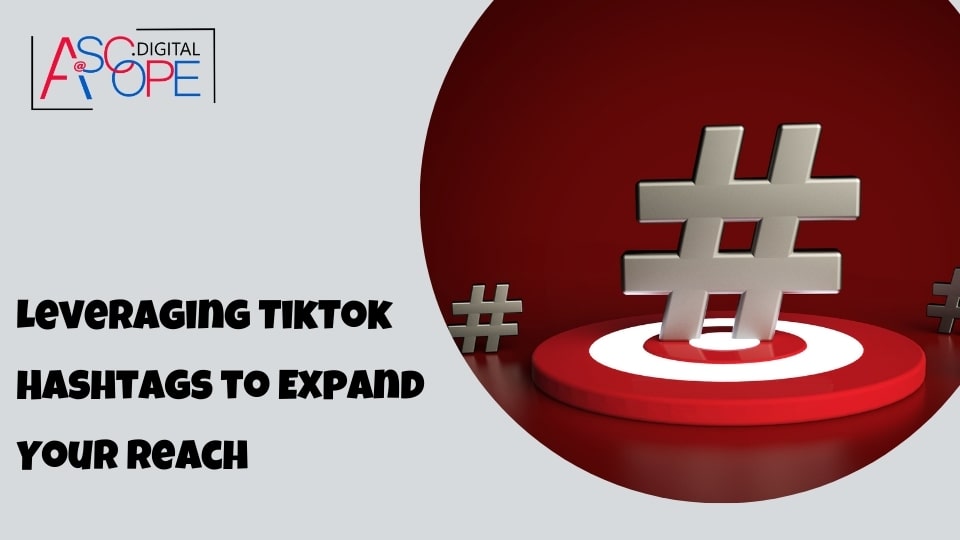In the ever-evolving world of social media marketing, TikTok has emerged as a powerhouse platform that businesses and influencers cannot afford to ignore. With its rapidly growing user base and engaging short-form video content, TikTok offers a unique opportunity for brands to connect with their audience in a fun and creative way. One of the most effective strategies for maximizing your reach on TikTok is through the strategic use of hashtags. In this comprehensive guide, we will explore the various ways you can leverage TikTok hashtags to expand your reach, engage with your target audience, and ultimately drive traffic and sales to your website.
Understanding the Importance of Hashtags on TikTok
Hashtags are a fundamental element of TikTok’s ecosystem. They serve as a way to categorize content, making it easier for users to discover videos related to specific topics or trends. When used effectively, hashtags can significantly increase the visibility of your content, helping you reach a broader audience beyond your immediate followers. Here are a few reasons why hashtags are crucial on TikTok:
- Discovery: Hashtags help users discover new content. When someone searches for a specific hashtag, they are presented with a curated feed of videos that use that hashtag. This means your content has the potential to be seen by users who are interested in that topic, even if they don’t follow you.
- Trending Topics: TikTok’s algorithm often highlights trending hashtags, giving your content a chance to go viral. By participating in trending challenges or using popular hashtags, you can tap into the collective interest of the TikTok community and gain significant exposure.
- Engagement: Hashtags encourage user interaction. When users see a hashtag they are interested in, they are more likely to engage with the content by liking, commenting, or sharing. This engagement can boost your video’s visibility and attract more viewers.
- Brand Visibility: For businesses, using branded hashtags can enhance brand visibility and create a sense of community among your followers. Encouraging users to create content using your branded hashtag can also generate user-generated content, providing social proof and expanding your reach.
Crafting an Effective Hashtag Strategy

To fully leverage the power of hashtags on TikTok, it’s essential to develop a well-thought-out hashtag strategy. Here are some steps to help you craft an effective strategy:
1. Research Relevant Hashtags
Start by researching hashtags that are relevant to your niche or industry. Use TikTok’s search function to explore popular hashtags and see what kind of content is associated with them. Pay attention to the number of views and the type of engagement these hashtags receive.
2. Mix Popular and Niche Hashtags
While it’s important to use popular hashtags to increase your reach, don’t overlook niche hashtags that are specific to your target audience. Niche hashtags may have a smaller audience, but they often lead to higher engagement rates because they attract users who are genuinely interested in that topic.
3. Create Branded Hashtags
Developing a branded hashtag is a powerful way to promote your brand and encourage user-generated content. Choose a hashtag that is unique, memorable, and aligns with your brand identity. Promote your branded hashtag in your videos and encourage your followers to use it when creating content related to your brand.
4. Participate in Challenges
TikTok is known for its viral challenges, which often revolve around specific hashtags. Participating in these challenges can boost your visibility and help you connect with a wider audience. Keep an eye on trending challenges and participate in those that align with your brand or content theme.
5. Analyze and Adjust
Regularly analyze the performance of your hashtags to see which ones are driving the most engagement and reach. Use TikTok’s analytics tools to track the performance of your videos and hashtags. Based on this data, adjust your hashtag strategy to focus on the most effective tags.
Best Practices for Using Hashtags on TikTok
To ensure your hashtag strategy is effective, follow these best practices:
1. Use a Variety of Hashtags
Using a mix of popular, niche, and branded hashtags can help you reach different segments of your audience. Popular hashtags can attract a broader audience, while niche hashtags can help you connect with users who have a specific interest in your content.
2. Limit the Number of Hashtags
While it’s tempting to use as many hashtags as possible, it’s best to limit the number to avoid cluttering your caption. TikTok allows up to 100 characters in the caption, so use this space wisely. Aim for 5-10 relevant hashtags per video.
3. Place Hashtags in the Caption
Placing hashtags in the caption rather than in the comments section ensures they are immediately visible to users and the TikTok algorithm. This can increase the chances of your video being discovered by users searching for those hashtags.
4. Be Authentic
Authenticity is key on TikTok. Use hashtags that genuinely relate to your content rather than trying to ride the wave of irrelevant trending tags. Authentic content is more likely to resonate with viewers and generate meaningful engagement.
5. Stay Updated
TikTok trends and popular hashtags change rapidly. Stay updated with the latest trends by regularly exploring the Discover page and following influencers in your niche. Adapting to new trends can keep your content fresh and relevant.
Case Studies: Successful Hashtag Campaigns
To illustrate the power of hashtags on TikTok, let’s look at a few successful hashtag campaigns:
1. #InMyDenim by Guess
Guess launched the #InMyDenim campaign to promote their denim collection. They partnered with popular TikTok influencers to create content using the hashtag, encouraging users to showcase their unique style in Guess denim. The campaign went viral, generating over 38 million views and significantly boosting brand awareness and sales.
2. #DistanceDance by Procter & Gamble
During the COVID-19 pandemic, Procter & Gamble partnered with TikTok influencer Charli D’Amelio to launch the #DistanceDance campaign. The challenge encouraged users to create dance videos while practicing social distancing. The campaign garnered over 8 billion views, raising awareness about social distancing and promoting Procter & Gamble’s brands.
3. #GuacDance by Chipotle
Chipotle celebrated National Avocado Day with the #GuacDance challenge, encouraging users to show off their dance moves in honor of guacamole. The campaign received over 250,000 video submissions and generated more than 430 million video starts, making it one of the most successful branded hashtag challenges on TikTok.
Leveraging TikTok Hashtags for Traffic and Sales
By now, it’s clear that hashtags can significantly enhance your reach and engagement on TikTok. But how do you translate this increased visibility into traffic and sales for your website? Here are some strategies:
1. Include a Call-to-Action (CTA)
Incorporate a clear and compelling CTA in your videos. Encourage viewers to visit your website, check out your products, or take advantage of a special offer. Use hashtags to draw attention to your CTA and make it easy for users to take the next step.
2. Link in Bio
Use the link in your TikTok bio to direct traffic to your website. Mention the link in your video captions and use hashtags to attract users who are interested in what you offer. Regularly update the link to reflect your latest promotions or content.
3. Promote Special Offers
Create exclusive promotions or discounts for your TikTok audience. Use hashtags to highlight these offers and create a sense of urgency. This can drive traffic to your website and encourage conversions.
4. Showcase User-Generated Content
Encourage your followers to create content using your branded hashtag. Showcase the best submissions on your profile and direct viewers to your website for more information or to participate in the campaign. User-generated content builds trust and authenticity, which can lead to increased traffic and sales.
5. Collaborate with Influencers
Partnering with TikTok influencers can amplify your reach and drive traffic to your website. Influencers can use your branded hashtags and include CTAs in their videos, encouraging their followers to visit your website and explore your offerings.
Analyzing the Impact of Hashtags on Your Campaigns

To ensure your hashtag strategy is driving the desired results, it’s important to regularly analyze the impact of your campaigns. Here are some key metrics to track:
1. Views and Engagement
Monitor the number of views, likes, comments, and shares your videos receive. Look for patterns in the performance of different hashtags and adjust your strategy accordingly.
2. Website Traffic
Use web analytics tools to track the traffic coming from TikTok. Look at metrics such as page views, time on site, and conversion rates to understand how TikTok is contributing to your overall traffic and sales.
3. Hashtag Performance
TikTok’s analytics tools can provide insights into the performance of individual hashtags. Track metrics such as the number of views and engagements each hashtag receives to identify the most effective tags for your content.
4. User-Generated Content
If you are running a branded hashtag campaign, monitor the volume and quality of user-generated content. Engage with users who participate in your campaign and showcase their content to build a sense of community.
Conclusion: Expanding Your Reach with TikTok Hashtags
In conclusion, TikTok hashtags are a powerful tool for expanding your reach, engaging with your audience, and driving traffic and sales to your website. By developing a strategic approach to using hashtags, you can tap into the vast potential of TikTok and achieve your marketing goals.
Remember, the key to success on TikTok is authenticity and creativity. Stay true to your brand, keep up with the latest trends, and continuously refine your hashtag strategy based on performance data. By doing so, you can leverage TikTok hashtags to their fullest potential, thus improving traffic and sales for your website. Read more on the other reasons why your website isn’t getting traffic and discover how to optimize your overall digital marketing strategy.


